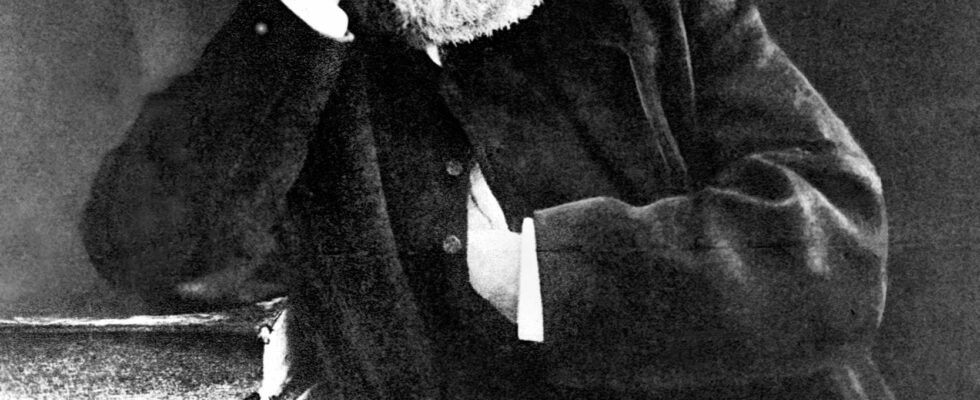In the 19th century, we didn’t bother with political correctness, if we are to believe this bad joke from Balzac, unimaginable today: “I worked like a Negro, or like a Dumas.” The caffeine-soaked Stakhanovist genius was no more tender towards Sainte-Beuve: “Mr. Sainte-Beuve’s poems always seemed to me to be translated from a foreign language by someone who knew that language only imperfectly. .” Even more comical, his quarrel with his ex-friend Eugène Sue. Balzac can’t get over the fact that this frivolous and expensive dandy, member of the Jockey Club, has recycled himself into an icon of the left thanks to the success of the Mysteries of Paris. The press starts paying Sue three times more than Balzac! The author of The Human Comedy don’t be angry at the “literary pioupiou” to “grocer’s novels”. It is true that he has a high idea of himself, as evidenced by this letter to Mrs. Hanska: “There are only three men in France who know how to write our language: me, Théophile Gautier and Victor Hugo. ” And to drive the point home: “One day, people will have to end up reckoning with me. Whatever the cost, I will impose myself on this society which is choosy about my thick figure and my boorish ways.” Posterity will prove him right.
All these incredible quotes can be found in Romanticismsthe first volume of Romance of artistsa tetralogy that Dan Franck begins with a bang with this volume which goes from 1815 (Waterloo) to 1847 (end of construction of Alexandre Dumas’s Monte-Cristo castle). In the meantime, there was the decisive year, 1830, which saw the Battle of Hernani and the Three Glorious Years take place. Aesthetics and politics mix (not always well) among all the young people of this generation. As an excerpt to RomanticismsDan Franck put this sentence from Baudelaire: “It is a very great and very useful pleasure to compare the features of a great man with his works.”
After reading everything about this period, the writer takes us behind the friendly and creative scenes of these prosperous years. We thus witness the painting by Delacroix of Liberty leading the peopleto the changes in the press and publishing, to the trip to Venice by Alfred de Musset and George Sand, to their separation, and later to the evenings at Sand’s house in Nohant, bringing together Chopin, Liszt and Delacroix in particular – because it is a small world where everyone knows each other, meets each other, bonds, gets angry. Admiration and rivalry are the sinews of war. When Daumier caricatures Louis-Philippe, Balzac applauds: “This guy has Michelangelo under his skin.” But when Stendhal publishes The Red and the Black at the very beginning of the July Monarchy, Hugo was less laudatory towards Henri Rochefort: “I tried to read that. How could you go further than the fourth page? So you know the patois? Me, I don’t get excited about mistakes in French. Every time I try to decipher a sentence from your favorite work, it’s like having my teeth pulled.”
“She’s stupid, she’s heavy, she’s talkative”
Misogyny is often one of the characteristics of these ambitious people. Despite her talent and panache, Sand serves as a lightning rod for her sisters, as she concentrates male wrath. The Goncourt brothers hate her, Barbey d’Aurevilly finds her “lost in a numbness as deep as emptiness” and Baudelaire finishes her off: “She is stupid, she is heavy, she is talkative; she has the same depth in moral ideas of judgment and the same delicacy of feeling as the concierges and the kept girls.” Don’t throw any more away! When we see the pathological susceptibility of today’s authors, we say to ourselves that they would have quickly lost their illusions in the fierce literary world of the 19th century…
A more discreet genius than Hugo or Balzac emerges from this multiple biography which resembles a more lively Lagarde and Michard: Gautier. Gérard de Nerval’s teenage friend, the man in the red vest of the battle of Hernani, the “impeccable poet” (according to Baudelaire), was also an inventive novelist and a curious and generous critic, at work prolific journalist. All his judgments on his contemporaries prove to be fair and enlightening. With Dan Franck, we have a lot of fun, we revise, we enjoy the jokes and we learn lots of little-known anecdotes. As soon as you close your book, you can go back to the source by diving into History of romanticism by Gautier and Things seen by Hugo.
The Romance of artists. I. Romanticismsby Dan Frank. Grasset, 406 p., €24.
.
